Not having a reliable way to bring in new sales can be tough. And simply waiting around isn’t a very effective strategy.
So what should you do?
There is already a lot of advice out there: follow theses 5 steps to rank #1 in Google or 3 ways to get Facebook likes.
But it’s not always easy to turn that advice into something you can use for your store.
That’s why I found 15 online store owners that were willing to share how they got their first 50 customers. Reading how they did it will hopefully give you some great ideas.
It’s also very interesting to see that an approach (promoting on deal sites) that worked really well for one store, while it didn’t work well for another.
And while most of the featured stores today are at a different stage, they all got started with their first 50 customers.
Enjoy!
Doki Doki Desu

DokiDokiDesu sold Anime + Cosplay products. Starting out they put their products up on eBay while they launched their own Shopify store. Their 50th order on eBay came 4 months after launch, their Shopify store took 6 months to get to 50 orders.
When they launched their store they reached out to Facebook friends to like their page and share it.
When orders started coming in through eBay, they included a small note with every order thanking the customer for their purchase and pointing them to their website to check out the other products.
To find new customers they connected with their potential customers (people interested in Anime) on Instagram. This meant a lot of liking and following.
To meet some of their potential customers face to face they went to a local expo, Anime Expo in Los Angeles. They spent about $50 on flyers that they handed out during the event. This helped to get the word out and gave them a nice stream of visitors and their first couple of sales on their store.
Besides getting people to their site DokiDokiDesu also focused on good product photography early on:
Our pictures are by no means amazing, but most of our competitors used pictures directly from the manufacturer. We found that they in no way did justice to the item (most of the time) so we take the extra time to take and edit our own pictures, even if that means a delay in getting everything up.
Motorbike gear store
(Chris preferred to keep his store confidential, but I still wanted to include it because it’s such a simple but effective approach.)
To launch his motorbike gear store, Chris approached various people on social media with a big and relevant following and asked them if they would be interested to be affiliates for his products.
His niche was pretty large so he was able to approach a lot of people. With a couple of people interested, he started work on getting the product manufactured. When the products were live on his site, he sent out samples, good promotional texts and pictures to his affiliates. By reducing the work for them he made sure that they were more likely to promote his product.
The affiliates advertised the products to their audiences and those visitors bought on Chris’ website. Each affiliate was compensated for sales they drove.
Ruby & Duke
Ruby & Duke sold subscriptions that sends dog owners a monthly box full of treats for their favourite pet. They launched in the beginning of 2015 and 3 months later they already hit €20,000 in recurring revenue!
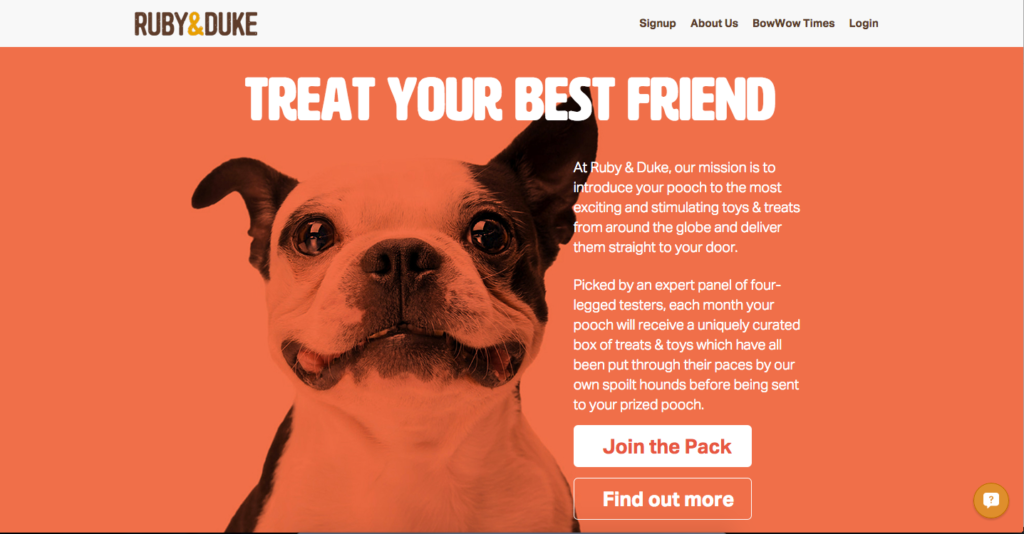
They did a number of things to grow this quickly:
- Started a dog blog, the BowWowTimes – this drove 50 sales
- Turned blog readers into subscribers whom they occasionally pitched the subscription box to – drove 100 sales
- Started with Facebook ads hyper-targeted at their ideal audience: dog lovers in the UK & Ireland. Especially Facebook offers drove a lot of sales (no exact numbers available)
- Set up a referral system for existing customers
- Promoted their subscriptions on deal sites. This got them 200 customers, but most of them cancelled after 1 month.
Beard Mountain
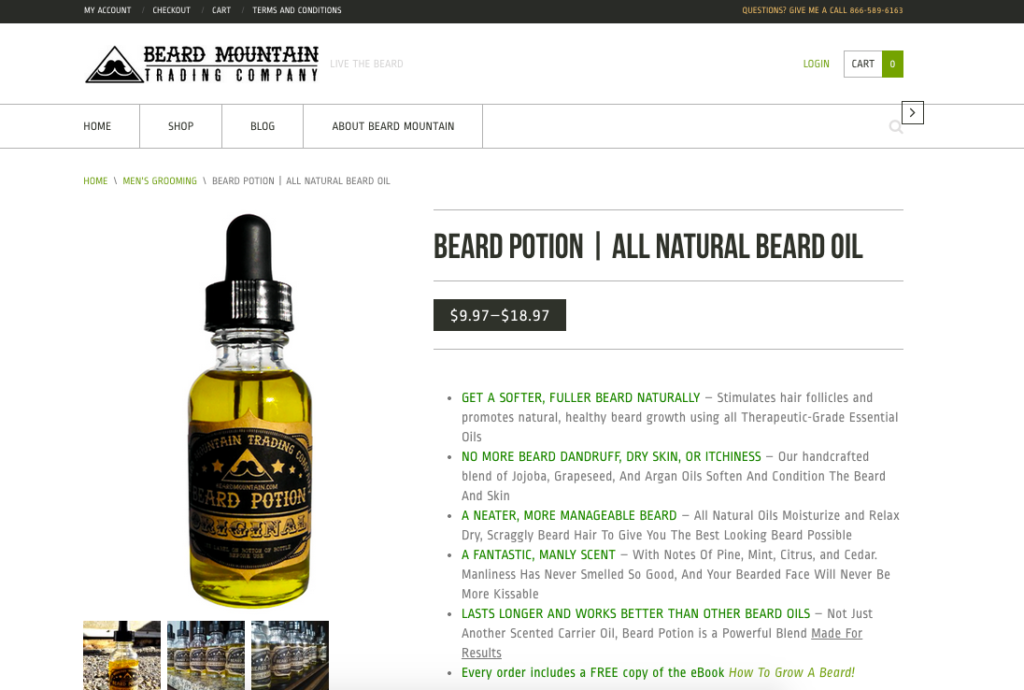
Beard Mountain sells beard care products.
Store owner Ian Pickering says that creating great content has been a huge focus for his business since the start. His blog posts have been the main driver of traffic to his site. The main goal of those posts is to help people what they want: a great beard.
Surprisingly his highest traffic posts are those that help people make their own beard care products, the same products he sells in his store!
That might seem counter-intuitive, but the truth is that most people appreciate it – and it shows them the value of the product when they see the work that actually goes into creating it. Sharing this information on sites like reddit brought him his first customers:
Reddit can be extremely anti-business, but I shared my content and never mentioned it was any kind of business. It was truly pure value, and it has brought thousands of people to my site.
Luxy Hair
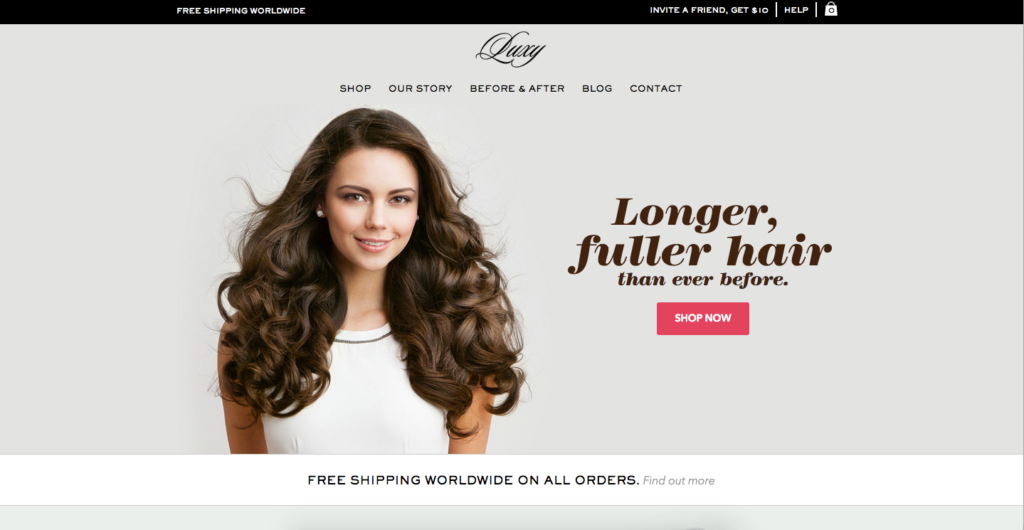
Luxy Hair sells hair extensions. Their main source of traffic and sales have been videos they create with hair styling tips on YouTube.
From day one, people really found these videos useful. Today they continue to bank on this strategy even though the scale has gone way up. The business generates a self-reported 7 figures a year and they’ve got about 2 millions YouTube subscribers!
Raw Generation
Raw generation sells health products based on raw foods.
Initially they tried to promote the business through various social media without much success.
They found their first real breakthrough when they started promoting their products through Lifebooker, a deal site. They found traction for the business and continue to grow by experimenting with other deal sites like Groupon, Gilt and Rue La La.
Store owner Jessica Geier describes their success with the deal sites as follows:
Deal sites are great because you are paying for sales, not the possibility of sales. Sales are key. Problems are easier to fix (or go away) when money is coming in.
Sumo Jerky

Sumo Jerky is a beef jerky subscription service. Noah Kagan started the business as part of a challenge to get to $1000 in sales within 24h.
After picking a product (beef jerky) he defined his ideal customer. Het settled on offices that needed healthy snacks and young professionals that eat healthy. Then he started reaching out to all of his contacts that fit this profile via email and on Facebook .
After getting some initial sales he also created templates for those buyers to help them spread the word via email and Facebook.
When the challenge ended, Ryan took over the business. He also used (cold) email outreach to continue to grow sales: he emailed over 5000(!) offices and managed to sign 200 customers from those efforts.
Beardbrand
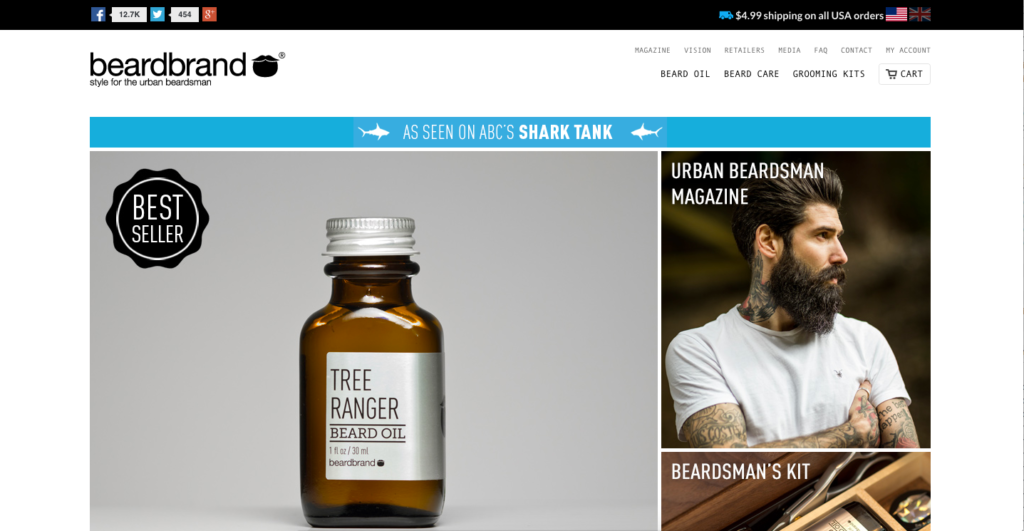
Beardbrand, another beard care store, started when Eric Bandholz started a blog & building up community of beard enthusiasts.
After immersing himself in the beard lifestyle for over a year, he got to know what products were on the market to help to maintain a great beard. Because he felt that some of his beard needs weren’t properly addressed, he created his own line of products.
Because of his expertise on beard grooming products (and he site to show that) he was contacted by a journalist of the New York Times that was doing a piece on the beard renaissance. This came as the perfect opportunity to launch his store & products.
The first 50 sales came in from the flow of visitors that the NYT article kickstarted. In the days after he was contacted by other news outlets and sites that also wanted to cover his story.
Just Herbs

Just Herbs sells their own Ayurvedic beauty products.
They started out when ecommerce was just taking off in India. Because they lacked the credibility to sell their own products on their own site, they first sold their products on aggregator sites that focused on beauty products.
When those products started selling well, other sites approached them as well. That helped them turn a nice volume on those sites.
In the mean time they continued to work on their own site. When they finally launched their online store they were able to use the traction that they build up on the aggregator sites to generate sales on their own store.
According to Arush, the founder of Just Herbs, the products played a big parts in getting that initial traction. If people have bought and enjoy using one of their products, there is a big chance that they want to buy it again. That coupled with a good price and quality get them their first 50 orders.
MixedMade
MixedMade sells condiments like special honeys and syrups.
Similar to the story of Sumo Jerky, this store was also launched as part of a challenge. The owners wanted to launch a business from scratch in 30 days. Once they had a pretty good idea of the product they were going to sell, they started accepting pre-orders on their site.
One of the founders, Morgen Newman, announced his new project on Facebook.
That drove the first visitors to their site as well as the first couple of sales.
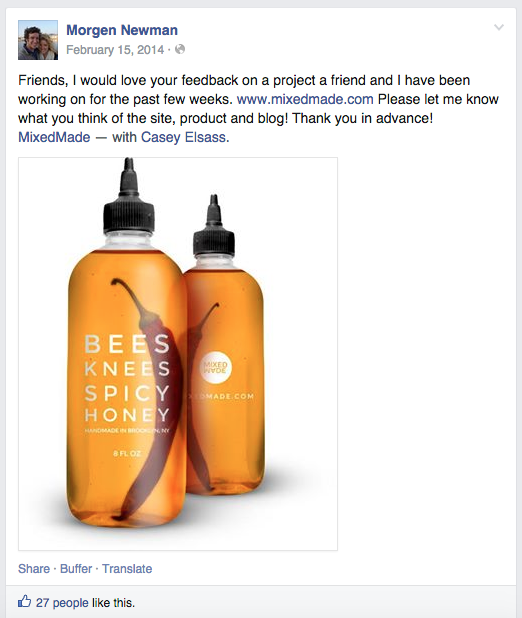
They expanded on this success by getting some of their products in the hands of food bloggers and food stylists, which brought in another load of customers.
Bumble Bee Linens
Bumble Bee Linens sells products like monogrammed handkerchiefs.
The site owners, Steve and his wife Jennifer started selling on eBay. That went quite well and with every order, they included a card with a coupon code that customers could use to get a discount on their next purchase. That made sure repeat purchases happened on their own site instead of on eBay.
Initially their main products were monogrammed handkerchiefs for weddings. To get the word out about the business they became active on wedding forums and provided helpful advice to would-be brides. While doing that, they made sure to drop their own store here and there.
They started advertising with Google Adwords to get extremely targeted traffic to their website. In parallel, they were pumping out content which allowed them to attract organic search traffic.
By working together with wedding and event planners, they managed to get bigger orders which increased the volume and consistency of their business. Together with the approaches outlined above, the grew the business to $100k in the first year!
BOOM! by Cindy Joseph
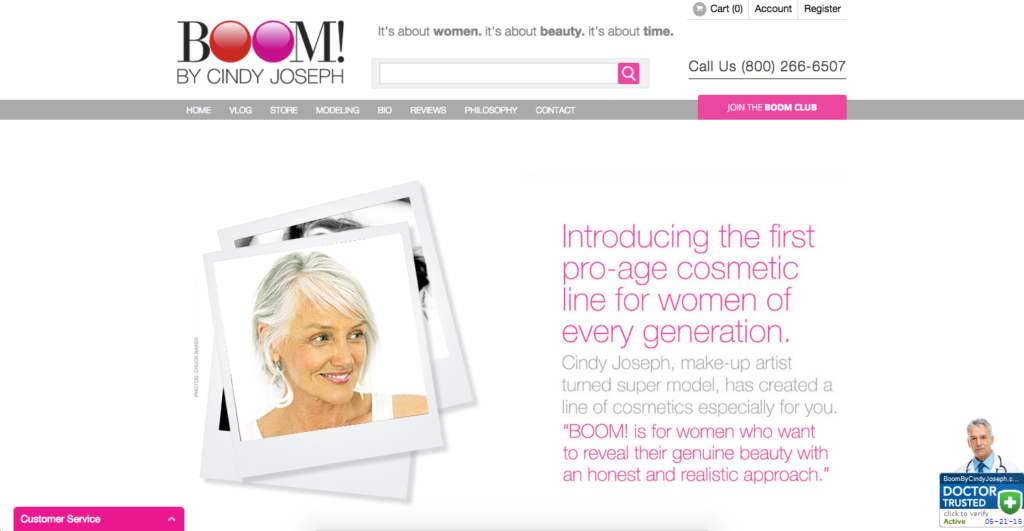
When starting BOOM!, a store that sells cosmetics to an older demographic, Ezra Firestone was hoping to get most of his traffic through SEO, as he had done with his previous companies.
But no-one was searching for his products. People were looking for anti-ageing, not for make-up products for this specific audience.
So if no one was actively looking for their products, they needed a different way to grab the attention of their target audience. They decided to leverage content marketing. They didn’t specifically write about skin care or make up, but tried to address issues that were highly relevant to potential customers such as dealing with menopause etc.
To kickstart their efforts they started buying traffic with highly targeted Facebook ads. In these ads they promoted their content rather than the products they were selling. The first goal was to build a community which they could later use to make offers to.
Tying in their content with their products, and actively mailing their subscribers, they were able to get their first 50 customers.
Craft Beer Hound
Craft Beer Hound is a store that sells unique gadgets for beer lovers.
When they started out, they were spreading their products all over social media. One of those efforts, a particular product they pinned on Pinterest, a customised box that collects beer caps, started gaining traction. Other people were re-pinning it to boards as Best Father’s Day Gifts etc.
This drove a lot of traffic to their website, which resulted in their first 100 sales.
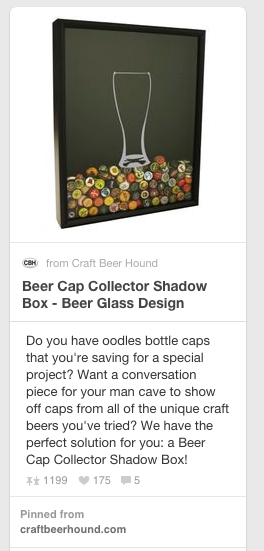
Drones Etc.
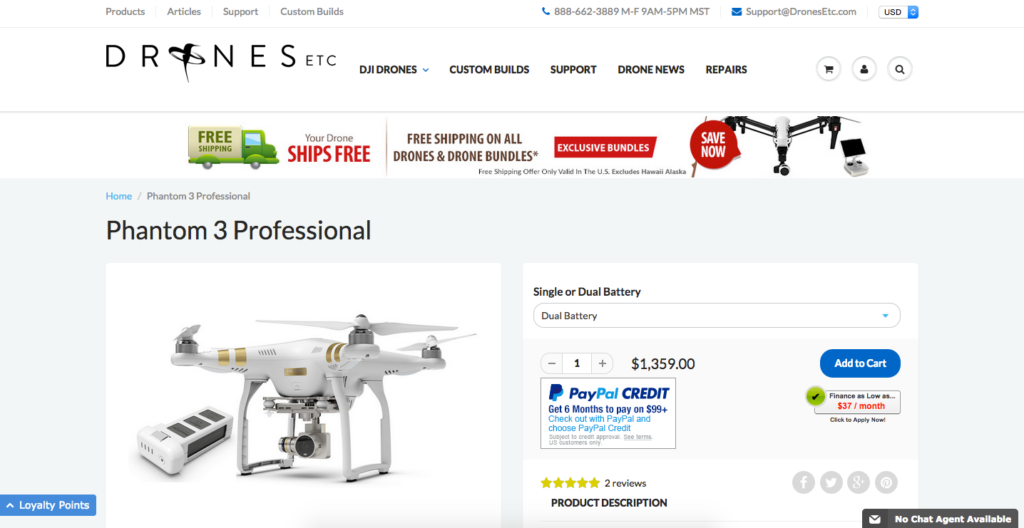
Drones Etc. sells drones to consumers and professionals, with a focus on drones that are able to carry video & photo cameras.
Like some other examples we’ve seen here, Drones Etc. also started out by listing their products on Amazon. This got them their first sales pretty quickly and gave them some revenue to build out the business.
In mean time they started working on their own site. Their main source of traffic are referrals from visitors on the website of the manufacturer of their products.
This manufacturer invests a lot in marketing to build the brand and drive people to its site. Drones Etc. has been able to leverage this traffic to generate sales on their own site.
Orglamix Cosmetics
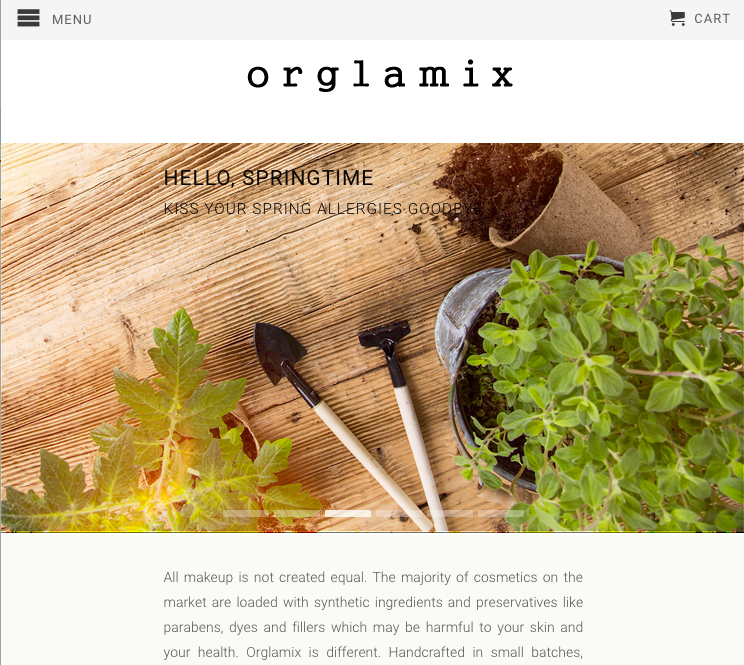
Cheri from Orglamix started sending out free products to bloggers in her niche. She started sending out 5-10 samples per week of her makeup products. After a year she was able to generate over a hundred of reviews.
All these reviews drove traffic back to her site which translated into sales.
That’s been so successful for the store that today she’s got a dedicated page on her site outlining exactly what someone has to do in order to get free samples.
Back to you
Now it’s your turn.
Have you found strategies that you could use for your store? Or maybe found a way to tweak an approach you’re already using?
To make it easier to get the higher level concepts behind these strategies, I’ve created a special bonus for this post.
Get the 4 battle-tested strategies in this article delivered to your inbox in seconds. I’ve also included 2 bonus ones. It’s great if you’re looking for new ways to increase sales for your store.
